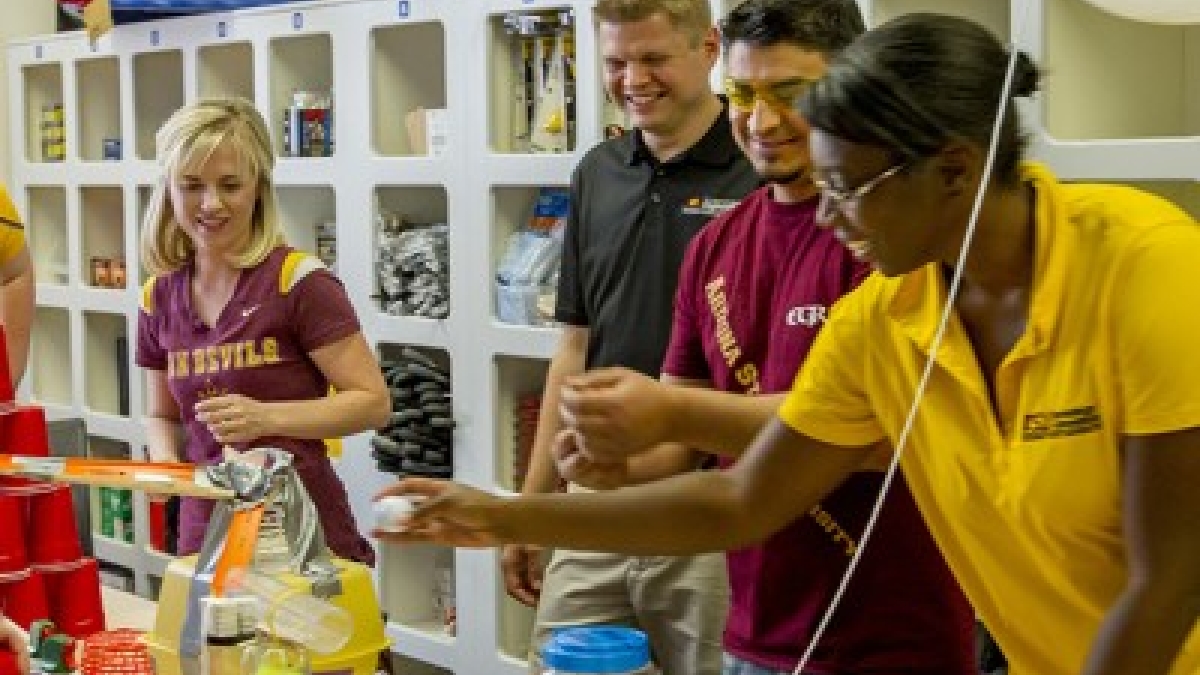ASU professor brings engineering camps to Navajo students

About 60 middle school and high school students recently participated in two STEAM Machines (science, technology, engineering, arts and mathematics) camps on the Navajo reservation; one in To’hajiilee, near Albuquerque, New Mexico, and one in Shonto, Arizona.
The camps, featured in the Navajo Times newspaper, were organized by Shawn Jordan, an assistant professor of engineering education in the Ira A. Fulton Schools of Engineering at Arizona State University.
The STEAM Machines program challenges student teams to apply the engineering design process to build chain-reaction machines like those made famous by cartoonists Rube Goldberg and Heath Robinson. It teaches engineering skills, systems thinking and collaboration, and integrates the arts with the STEM fields of science, technology, engineering and math.
Jordan began working with schools in the Navajo Nation after judging the Navajo Nation Science Fair two years ago. His research involves context in design, informal engineering education, the "Maker Movement" and cross-disciplinarity. He led a team to two collegiate National Rube Goldberg Machine Contest championships, and has co-developed the STEAM Labs program over the past six years to teach middle- and high-school students science, technology, engineering, arts and math concepts through designing and building chain-reaction machines.
In addition to introducing students to engineering design and careers in the field, Jordan is also using data from the camps to help develop curriculum for Navajo Nation middle schools, which will be required to include engineering design in science classes beginning in fall 2015 as part of the Next Generation Science Standards for K-12.
The research is supported by a prestigious National Science Foundation Early CAREER Award to explore the intersection of Navajo culture and engineering design. It is a continuation of work started on the Navajo Nation under a Woodside Sustained Community Service Award in 2012.
“We’re looking at the best ways to teach engineering design in a way that has cultural context,” Jordan said. “It’s still very early in the data collection, but one thing we’re seeing is that these students are very in tune with the ‘making’ concept.
“They do a lot of making things at home. Students are helping build their own homes, or rewiring rooms inside, or making solar systems in science classes. There is a close alignment in the making they’re doing in STEAM camps and the making they’re doing in other parts of their lives.”
Jordan said the camps help incorporate a systematic engineering approach to the projects.
The next step for his research is interviewing professional Navajo engineers to learn how they view the similarities and differences between engineering design and Navajo culture.
Curriculum development will begin later this year and will be piloted next summer and fall before being implemented in 2015.